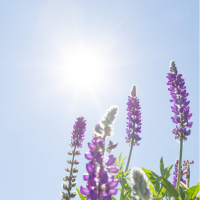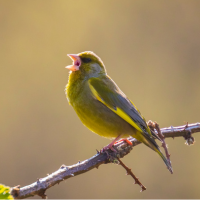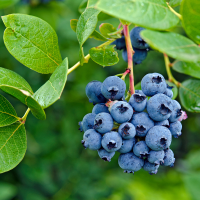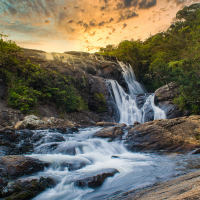6th June 2025
Sensing the world around us
The richness and complexity of nature invites us to experience the world by engaging all the senses available to us. Today we explore sight, sound, scent, touch and taste. By tuning into the full sensory experience of a place, we build deeper awareness and connection with the natural world, noticing details we might usually overlook.
Live event
*You can use a timezone converter to check the workshop time in your area.
6th June, 4pm - 5pm Pacific; 7th June, 9am - 10am Brisbane, Australia (AEST)
Drawing Tutorial by Tim Pond
Artist Tim Pond has shared a tutorial with us today, with instructions for learning to draw negative and positive shapes. This approach is a form of intentional looking and an exercise in observing where a subject sits and how it relates to the space within and around it. Click the holly sprig below to access the tutorial.
Nature journaling prompts and ideas
In 2023, the theme for International Nature Journaling Week was all about taking a Sensory Safari.
Today, we will revisit some of the workshops from that week as well as lots of new nature journaling prompts and ideas.
Nature uses scent as a form of communication, to attract pollinators, warn of danger, mark territory, or signal ripeness and decay. For humans, scent can be an important and meaningful connection to the past, evoking vivid memories of time spent in nature. In this interactive workshop, Corina Brdar shared ideas for ways to incorporate observations of scent into our nature journals.
Take a slow walk and pause often to notice the smells around you, for example crushed leaves, damp earth, flowers, or cut grass. Journal what you notice. Are the scents strong or faint? Pleasant or surprising? What memories or feelings do they evoke?
It is likely that the first nature sounds that you hear when you step outside are the songs of your local birds. In this talk, naturalist David Lukas introduced us to the joyful world of bird song. He talked about how and why birds sing. Bird songs and vocalisations are a huge part of how birds interact with each other, and this talk opened a new world of understanding.
A wonderful activity for observing the sounds around us is to create a sound map. This activity was described in the book Sharing Nature With Children by Joseph Cornell but is a wonderful exercise for people of all ages. To do this activity, sit quietly for 5–10 minutes. Mark yourself at the centre of the page and draw or note the sounds you hear around you. You might hear birds, wind, insects, distant traffic, or rustling leaves. Which direction are the sounds coming from? What is loud, soft, near, far? Mark all that you hear on your sound map using words and pictures.
It is not always a good idea to taste things in nature, but when have an edible garden we can enjoy the experience of picking and tasting plants, as well as describing the flavours in our nature journals. In this workshop, Bethan Burton explored ways to describe taste in our nature journals by using descriptive language, metaphor and personal associations.
Choose a fruit, vegetable, or herb from your fruit bowl or refrigerator. Before eating, observe it closely. Notice its shape, colour, texture, and scent. Then, take a slow bite. Describe the taste in as much detail as possible. What story does this flavour tell about its origin? How does this taste connect you to the season, your place in the world, or your own body? Do you notice the limitations of language for describing the sense of taste? How can you stretch past these limitations in your nature journal?
Touch helps us connect directly with the physical world. You might experience the roughness of tree bark, the softness of moss or the warmth of a stone in the sun. Through texture, temperature, and pressure, we gain insights into the conditions, materials, and stories of a place, grounding our experience in the present moment.
Depicting texture in our nature journals can be tricky. In this workshop, artist Mike Hendley demonstrated how to recreate some common textures found in nature with a pencil and a few simple tools.
Find three different natural textures (for example bark, leaves, rocks, or soil). Describe or draw each one. Use words like rough, smooth, crumbly, soft, cool. You might like to include a word list in your nature journal. What do these textures tell you about the environment?
For many people, the sense of sight dominates how they experience the world. Those with their sense of sight available to them can perceive colours, shapes, patterns, movement, and light in nature. Observing colour is one way that we can explore what we see in nature. In this workshop, Verena Hillgärtner and Bethan Burton explore colour mixing and play with inventing new names for the colours around us.
Find a natural object or nearby scene. It might be a leaf, flower, tree, or landscape. Spend 5 minutes looking closely at it. Notice details like colour variations, shapes, patterns, and shadows. Draw or write about what you see. What new things do you notice when you slow down and really look?
If you are enjoying the week, please consider making a donation to help cover the cost of running the event.
Your generous support helps make International Nature Journaling Week possible.
Thank you!







